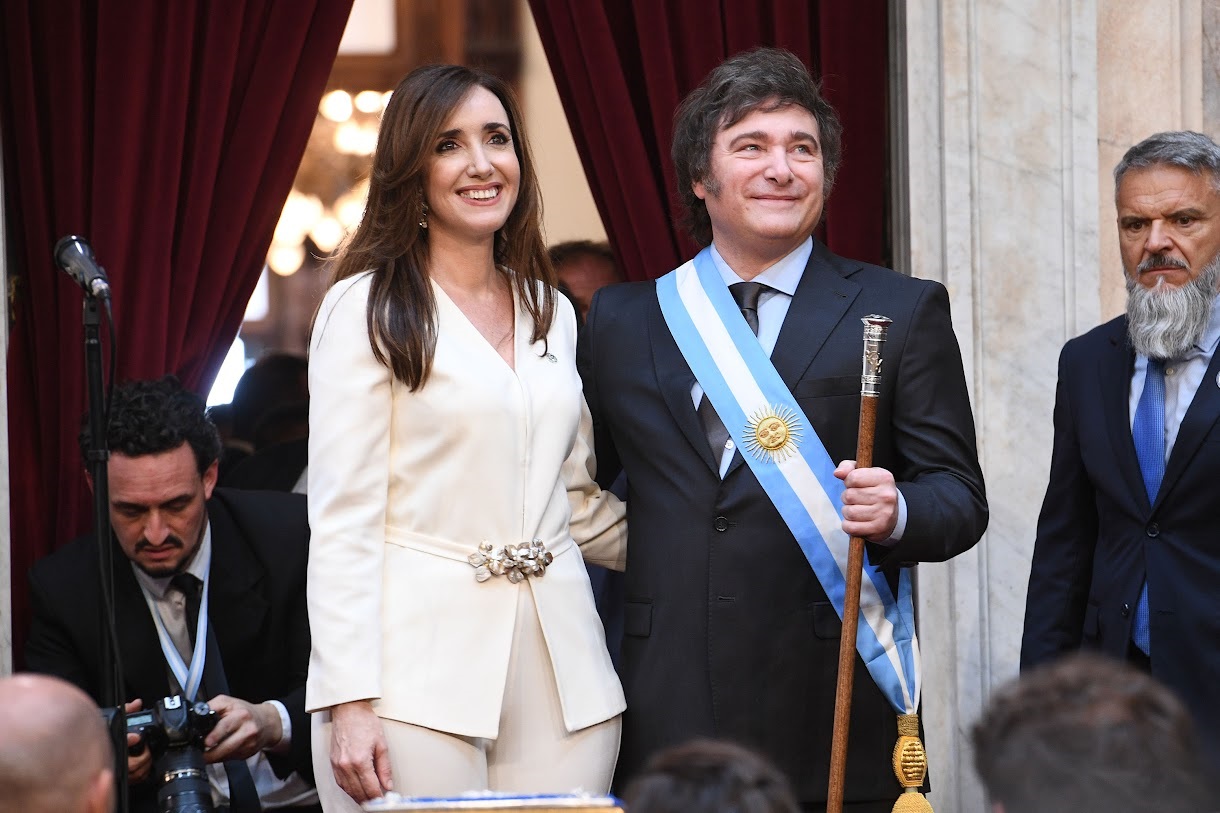In my previous post, I described what I consider to be the two most important prices in the Argentine- or any!-economy. Having indulged in such extended preliminaries, let us address what is going on in Argentina nowadays.
Soon after the inauguration of Javier Milei as the new president of Argentina, his government devalued the official rate of the local currency from about 400 pesos per US dollar to about 800 pesos per dollar. That brought the “multilateral real exchange rate index” (ITCRM), which compares the real purchasing power of the local currency in comparison with the purchasing power of other relevant trade partners from an index of 75 (December 2015 = 100) to above 150, reflecting the effect of devaluation.
I say the “official” rate, but perhaps it would be better to say the “reference” rate, since there are many “official” rates.
Now, about six weeks later, the reference rate is about 830 pesos, and the ITCRM is down to an index of 125, showing the appreciation of the reference exchange rate thanks to inflation of 25% per month as measured by the consumer price index. Mr. Milei came to office with the promise of dollarization for Argentina’s economy. His libertarian agenda was much broader than that, but that was what captured the imagination of many voters. However, Mr. Luis Andrés Caputo, his finance minister, has decided against dollarization, at least for now, and the reasons he gives are two: first, the negative position of foreign exchange reserves of the Argentinean central bank, and secondly, the short-term obligations of the bank with the banking system.
If money holders are allowed to exchange their pesos for dollars, there would not be enough dollars for available, fears Mr. Caputo. If money holders are allowed to exchange pesos per dollar, the (very short) time deposits in the banking system, the counterpart to the short-term obligations of the central bank, it is feared, will collapse, and the central bank would be forced to monetize them. Those seem to be very odd objections to offer, though.
Nowadays, in Mr. Milei’s Argentina, the peso is not just a “legal” tender; it is a “forced” tender. Argentineans are forbidden from using any other currency to denominate contracts, to make regular payments to each other, and to save. They do all of that, of course. Argentina is one of the most “de facto” dollarized countries globally, but they cannot do that legally. Mr. Caputo could allow people to contract in US dollars without committing the central bank to redeem a single penny in dollars from its reserves. One thing has nothing to do with the other.
It is true that to allow payments in dollars and not in its equivalent in local currency, a change in the Civil Code would be necessary, but if there were only one exchange rate freely determined by the market with freedom of entry and exit, payment in local currency would be indifferent to the traders. What is impeding Argentineans from using the dollar as a medium and as a rudder for their trades is not the need to change the Civil Code, but the fact that the government continues to impose different exchange rates, none of them a freely established one.
By revoking the “forced” tender status of the peso and giving “legal” tender status to other currencies, the Milei government could provide Argentineans with the monetary tools they need to cooperate and prosper. That would, marginally, I concede, reduce still more the demand for pesos, and that is perhaps why Mr. Caputo has advised against that. An alternative would be to unify and liberalize the official exchange rate, allowing it to float freely, as I have just mentioned. Again, fearing that reducing the demand for pesos would trigger hyperinflation seems to paralyze Mr. Caputo. Of course, I would not like to be in his shoes, but the ghost of hyperinflation will not fade away until confidence that pesos have a stable value, something that would motivate people to exchange dollars for pesos tomorrow as much as today; and most importantly, that holding pesos is not a money losing proposition.
The peso, however, is appreciating fast, if measured by the “reference” exchange rate, distorting relative prices of tradable goods and leaving in place the same incentives for corruption that so markedly Mr. Milei campaigned against. The exchange rate is the second most important price in the economy precisely because of that. The information that a market exchange rate gives is the gauge by which Argentineans can compare prices in the domestic market with prices abroad. Considering the relatively small size of the Argentinean economy (about 0,5% of global GDP) as previously mentioned, trying to do rational economic calculations without such information is very damaging to the economy.
In my next and final post, I will discuss the role of the MOST important price in the Argentine economy- the interest rate.
Leonidas Zelmanovitz, a Senior Fellow with the Liberty Fund, holds a law degree from the Universidade Federal do Rio Grande do Sul in Brazil and an economics doctorate from the Universidad Rey Juan Carlos in Spain.


READER COMMENTS
Thomas L Hutcheson
Feb 17 2024 at 7:08am
It seems that at least the Government would unify the rates and do a managed float. Or are differential exchange rates a source of revenue that would need to be replaced if rates were unified?
Comments are closed.